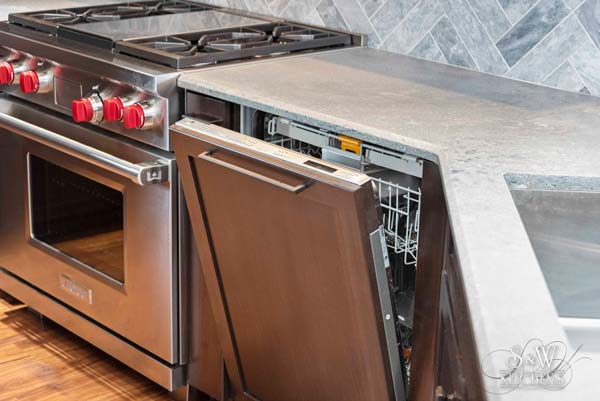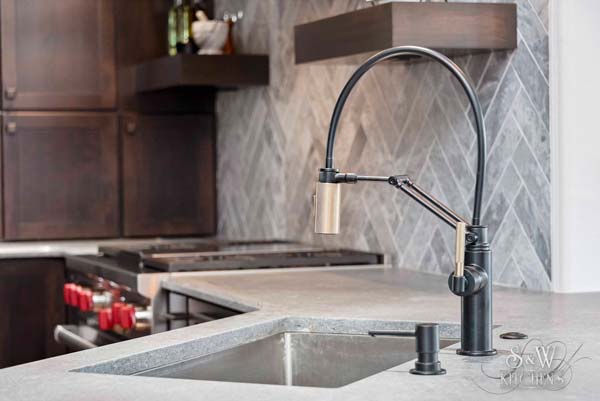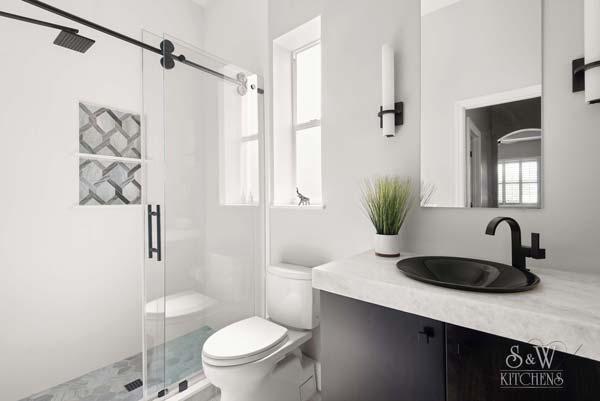Remodeling your kitchen or bathroom is a great way to make your home more livable it also increases the property’s value. While you are upgrading, why not save money in the process by adding one or more water-saving upgrades?

Energy-efficient dishwasher
EPA data shows that the average US household uses nearly 400 gallons of water per day, and the kitchen contributes its fair share to this. When remodeling your kitchen, a major water-saving option is an energy-efficient dishwasher.
Modern dishwashers are more efficient than washing your dishes by hand. On average they use only around 12 liters of water per cycle. This means that, compared to hand washing, a family of four could save up to 51 liters of water per load.

More efficient faucets
Modern high-efficiency faucets use less water while still providing enough pressure. There are several low-flow solutions on the market, some with more advanced features than others.
Most older faucets put out about 2.2 gallons of water every minute. With a low-flow faucet, you can cut this by close to 50 percent. Another point to remember is that faucets with ceramic disc valves can control leaks better.
Low-flow toilets
Research shows that around 27 percent of the water that is used in a typical home is literally flushed down the drain. Fortunately, the latest toilet models on the market are significantly more energy-efficient than their older counterparts. This means they use less water – and save you money in the long run. Low-flow toilets are great options if you want to save water.
While older toilets use nearly 7 gallons of water per flush, their modern high-efficiency counterparts use as little as 1.6 gallons. Even with a 2-flush setup, therefore, you will only be using about 50 percent as much water than before.

Get rid of the bathtub
It might come as a surprise to many readers that a full bath actually uses more water than taking a shower. A full bath can take as much as 70 gallons of water, while your typical shower head has a flow rate of only 2.5 gallons per minute. This means you will only be using around 25 gallons of water during a 10-minute shower.
There is, therefore, a solid argument to be made for getting rid of the bathtub altogether. This becomes an ever more viable option if you combine it with installing smart shower heads in the showers – see below.
Installing smart shower heads
With a smart shower head you will be able to check your water usage from the shower itself or from an app. The manufacturers all claim a remarkable reduction in water use. Some of these showerheads come with even more advanced features such as reducing the flow the moment you stand away from the stream of water (e.g. to apply shampoo or soap). Other available features include cutting off the water flow once the water heats up and creating different profiles for every family member so you can track their water use. This sounds like a great feature if you have teenagers in the house!
Similar smart faucets are available for the kitchen. There are, for example, models that can be switched on and off by using voice commands and that allow you to program the exact temperature you want the water to be. Some even use facial recognition combined with personalized profiles to ensure that every family member gets the water temperature he or she prefers, without having to first pour a gallon of water down the drain.
